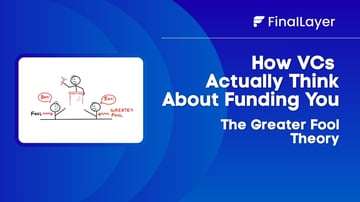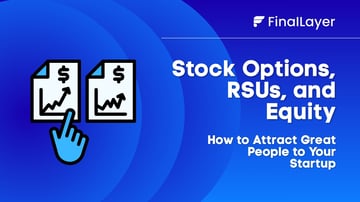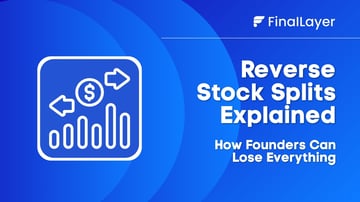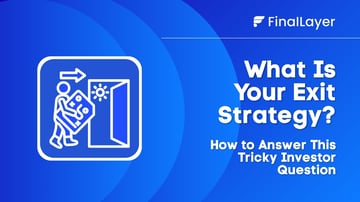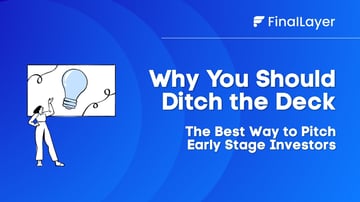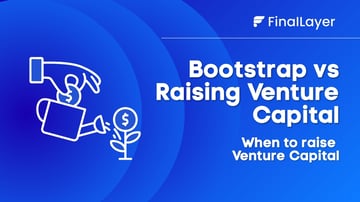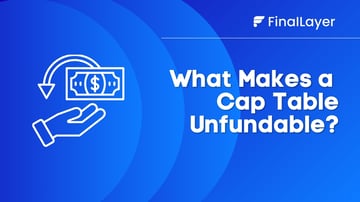Understanding the difference between smart money and dumb money in venture capital can make or break your startup's trajectory. Smart money refers to investors who bring strategic value, connections, and operational expertise beyond their capital, while dumb money comes from investors who only write checks without adding meaningful support. The truth about investor value is stark: according to Vinod Khosla, one of Silicon Valley's most successful venture capitalists, 90% of investors add no value and 70% actively add negative value to companies. This distinction matters far more than most founders realize when they're desperately trying to close a round, because the investors you bring onto your board today will determine which smart money investors you can access tomorrow.
What Is Dumb Money?
Dumb money typically refers to investors who put in capital without bringing anything else to the table. You'll see that most of the top VCs have ex-entrepreneurs running the show. They've been operators, they've been in tough situations, they've actually gone through the process and they kind of understand the ups and downs of startup life.
Even then, there's no guarantee that the investor is going to add value. But most of the situation is typically worse than that.
The Vinod Khosla Assessment
Here's a sobering statistic: 90% of investors add no value. In my assessment, 70% of investors add negative value to a company. That means they're advising a company - this is part of team building too for entrepreneurs - they're advising a company when they haven't earned the right to advise an entrepreneur.
That was Vinod Khosla in an interview with Sam Altman some years ago talking about how many investors don't really add value, and he's absolutely correct.
Why Khosla's Opinion Matters
Before we go further, understand who's making this assessment. Vinod Khosla is the founder of Khosla Ventures and was a founding CEO of Sun Microsystems, one of the most successful tech companies of the 1980s and 90s. He was also a general partner at Kleiner Perkins, one of Silicon Valley's most prestigious venture capital firms.
Khosla Ventures has invested in companies like Square, Instacart, DoorDash, Affirm, and hundreds of others. His portfolio includes some of the most successful startups of the last two decades. When someone with this track record says that 70% of investors add negative value, it's not cynicism - it's data from decades of observing hundreds of investments across multiple economic cycles.
Think about what this means: you're not just looking for investors who won't help you. You're trying to avoid the majority who will actively hurt you by giving bad advice that sounds credible because it comes from someone who wrote you a check.
The Modern VC Value-Add Attempt
These days, many VCs have started building a secondary goal to help entrepreneurs. For example, they will bring corporate partnerships or they will create a team that can help with recruitment, with design, basically providing some additional value to entrepreneurs beyond the capital.
This is a positive trend. Firms are recognizing that just writing checks isn't enough, and they're building infrastructure to actually support their portfolio companies. Some firms have platform teams dedicated to recruiting, PR, customer introductions, and other operational support.
Even still, navigating complex scenarios such as what happened to us is quite difficult for most investors. When things get truly hard - when you need to restructure your cap table, when you're considering a pivot, when you're dealing with difficult board dynamics - most investors, even those with good intentions, struggle to provide meaningful guidance.
Did We Raise Dumb Money?
Back to the question of did we raise dumb money, I think the answer is yes, especially in the beginning. But it is significantly more complex than that.
Even though we brought in other VCs during our journey, once you've started a board composition that is not very attractive, it becomes increasingly hard to attract good investors and board members. This is the trap that many founders don't realize until they're in it.
The Board Composition Problem
Most investors want to be on boards where they respect other board members and preferably even know other board members. This is why the whole VC game is a very incestuous game. It's a tight-knit community where relationships and reputation matter enormously.
Once a well-known VC will invest, a lot more people will also invest and so on and so forth because they love being on boards and collaborating with the VCs they know and respect. Conversely, if you have board members that top-tier VCs don't want to work with, you've essentially locked yourself out of accessing better investors in future rounds.
Can You Avoid Raising Dumb Money?
And lastly, the question of can you avoid raising dumb money? It's harder than you think. Most companies do not have the luxury of attracting the best VCs right off the bat. Unless you're a repeat founder with a strong track record, or you're working on something in an extremely hot space, or you have some other significant advantage, you're probably not going to get meetings with Sequoia, a16z, or Benchmark in your seed round.
The Impossible Choice
And so then the question becomes: do you raise from what's available or do you not raise at all?
If you're building a venture scale company, which means that your goal is to get to hundreds of millions of dollars in revenue and potentially market domination, then you do have to raise venture capital and not raising is not an option. You need the capital to compete, to hire, to market, to scale. Bootstrapping isn't realistic for most venture-scale opportunities.
So then the only two choices become: do you shut down if you cannot raise from one of the top VCs, or do you keep going with what's available? For most entrepreneurs, this is a very, very difficult decision. Shutting down when your idea seems to have promise and not taking the money that's actually available to you - someone willing to write a check - and you saying no just because they're not one of the top tier VCs is a very difficult decision.
Most founders, when faced with this choice, take the available money. They tell themselves they'll clean up the cap table later, or they'll attract better investors in the next round. Sometimes this works out. Often it doesn't.
The Revenue-First Alternative
Now, second time around, I will tell you that we've only raised a small amount of pre-seed and we're focused on building a revenue-oriented company with an eye towards cash flow positivity.
So our discussions internally are all about: how can we get to a million dollars in revenue? How can we get to three million ARR and when will we break even? And so that becomes extremely important because then you're not really dependent on venture capital all that much.
Why Never Growth-First Again
This is also why I would not build a growth-first company ever again, just because you need a lot of capital to do that. And if you go in growth first and bad things happen because of a market crash or anything like that, then you are left with a company that has a lot of growth, a lot of users, but no revenue.
And that is unattractive for PE firms to bail you out or a new investor to bail you out. When things go wrong, investors want to see revenue and a path to profitability. They don't want to see vanity metrics like user growth without monetization. A company with 10 million users and no revenue is much less fundable in a down market than a company with 100,000 users and $2 million in ARR.
Navigating the Complex Ecosystem
So very complex ecosystems here. Navigating is tough and I empathize with most founders who are trying to make these decisions. There's no perfect answer to whether you should raise from non-top-tier VCs or hold out for better options.
What I can tell you is this: if you do raise from investors who aren't top tier, go into it with open eyes. Understand that you may be making it harder to raise from better investors later. Understand that the advice you get may be more harmful than helpful. And most importantly, build your company in a way that minimizes your dependency on constantly raising more capital.
Revenue focus, path to profitability, and building something that can sustain itself - these aren't just nice-to-haves. They're your insurance policy against being trapped by bad board composition and limited investor options.
At FinalLayer, we're building with this exact philosophy. Small amount of capital raised, heavy focus on revenue from day one, and an explicit goal of reaching cash flow positivity. We learned these lessons the hard way, and we're applying them rigorously this time around.
If you want to discuss fundraising strategy and board composition with other founders who've navigated these challenges, join our founder's Slack community where we share honest experiences in the Founder Resources tab about what works and what doesn't in venture fundraising.



